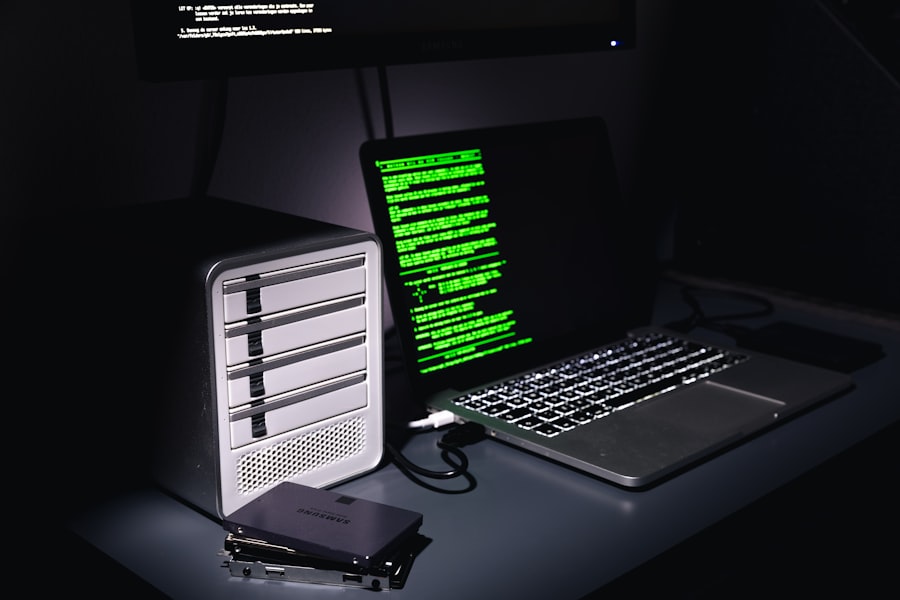As I delve into the world of web hosting and server management, I find myself increasingly drawn to the capabilities of CyberPanel, particularly its Command Line Interface (CLI). CyberPanel is a powerful web hosting control panel that simplifies the management of websites and servers. The CLI offers a streamlined way to interact with the panel, allowing me to execute commands directly without the need for a graphical interface.
This is particularly beneficial for those of us who prefer working in a terminal environment or need to automate tasks for efficiency. The CyberPanel CLI is not just a tool for seasoned developers; it is also accessible for beginners who are eager to learn. With its straightforward commands and extensive documentation, I can quickly grasp how to perform various tasks, from creating websites to managing databases.
The CLI enhances my productivity by enabling me to execute multiple commands in a single session, making it an invaluable asset in my web hosting toolkit.
Key Takeaways
- CyberPanel CLI is a powerful tool for managing CyberPanel through the command line interface.
- Setting up CyberPanel CLI is a straightforward process that involves installing the CLI and configuring the API key.
- Basic commands for automated tasks include creating websites, databases, and email accounts, while advanced commands allow for more complex tasks such as managing SSL certificates and backups.
- Creating and managing cron jobs with CyberPanel CLI enables users to schedule and automate repetitive tasks.
- Integrating CyberPanel CLI with other tools such as Ansible or custom scripts can further enhance automation and workflow efficiency.
- Troubleshooting and error handling are important aspects of using CyberPanel CLI, and users should be familiar with common issues and how to resolve them.
- Best practices for using CyberPanel CLI include keeping the CLI and CyberPanel software up to date, using version control for scripts, and implementing proper error handling and logging.
Setting up CyberPanel CLI
Setting up the CyberPanel CLI is a straightforward process that I found to be quite user-friendly. First, I ensured that I had CyberPanel installed on my server. The installation process is well-documented, and I followed the steps carefully to avoid any hiccups.
Once CyberPanel was up and running, I accessed the terminal on my server and began the configuration of the CLI. To initiate the CLI, I simply typed `cyberpanel` in the terminal. This command launched the interface, and I was greeted with a list of available commands.
It was exciting to see how easy it was to navigate through the options. I took a moment to familiarize myself with the command structure and the various functionalities available. The setup process also involved configuring user permissions, which I found essential for maintaining security while using the CLI.
Basic Commands for Automated Tasks

Once I had the CyberPanel CLI set up, I was eager to explore its basic commands for automating tasks. One of the first commands I learned was `createWebsite`, which allows me to quickly set up new websites on my server. By providing parameters such as the domain name and email address, I could create a fully functional website in seconds.
This command significantly reduced the time I spent on manual setups through the graphical interface. Another command that proved invaluable was `listWebsites`. This command provided me with an overview of all the websites hosted on my server, along with their respective details.
It was a simple yet effective way to manage my sites without having to navigate through multiple menus. Additionally, I discovered that I could use the `deleteWebsite` command to remove any sites that were no longer needed, streamlining my server management process even further.
Advanced Commands for Automated Tasks
As I became more comfortable with the basic commands, I ventured into the realm of advanced commands within CyberPanel CLI. One command that caught my attention was `backupWebsite`. This command allowed me to create backups of my websites effortlessly, ensuring that my data remained safe and secure.
By scheduling regular backups through the CLI, I could automate this crucial task and focus on other aspects of my projects. I also explored the `restoreWebsite` command, which enabled me to restore a website from a backup with just a few keystrokes. This feature was particularly useful when I encountered issues or needed to revert changes made during development.
The ability to manage backups and restorations directly from the CLI not only saved me time but also provided peace of mind knowing that my data was protected.
Creating and Managing Cron Jobs
One of the standout features of CyberPanel CLI is its ability to create and manage cron jobs seamlessly. Cron jobs are essential for automating repetitive tasks on my server, and using the CLI made this process incredibly efficient. To create a new cron job, I used the `createCronJob` command, specifying parameters such as the frequency and the command to be executed.
Managing existing cron jobs was equally straightforward. With the `listCronJobs` command, I could view all scheduled tasks at a glance. If I needed to make changes or delete a job, I simply used the `deleteCronJob` command followed by the job ID.
This level of control over scheduled tasks allowed me to optimize my server’s performance and ensure that essential processes ran smoothly without manual intervention.
Integrating CyberPanel CLI with Other Tools

As I continued to explore CyberPanel CLI, I realized its potential for integration with other tools and services. One integration that stood out was with Git, which allowed me to streamline my development workflow. By using Git commands alongside CyberPanel CLI, I could deploy code changes directly from my local repository to my server with ease.
Additionally, I discovered that integrating CyberPanel CLI with monitoring tools could enhance my server management capabilities. By setting up alerts for specific events or performance metrics, I could receive notifications directly in my terminal or via email. This integration not only kept me informed about my server’s health but also allowed me to take proactive measures when issues arose.
Troubleshooting and Error Handling
Despite its many advantages, using CyberPanel CLI does come with its challenges. During my journey, I encountered various errors that required troubleshooting. One common issue was related to permission errors when executing certain commands.
To resolve this, I learned how to check user permissions and adjust them accordingly, ensuring that I had the necessary access rights. Another aspect of error handling involved understanding error messages returned by the CLI. By taking the time to read and analyze these messages, I could often pinpoint the source of the problem and implement a solution quickly.
Additionally, I found that consulting online forums and documentation provided valuable insights into common issues faced by other users, further enhancing my troubleshooting skills.
Best Practices for Using CyberPanel CLI
As I became more proficient in using CyberPanel CLI, I began to adopt best practices that improved my overall experience. One key practice was maintaining a clear and organized structure for my commands and scripts. By using comments within my scripts and grouping related commands together, I could easily revisit and modify them in the future.
Another best practice involved regularly updating CyberPanel and its components. Keeping everything up-to-date ensured that I had access to the latest features and security patches, minimizing potential vulnerabilities. Additionally, I made it a habit to back up my configurations before making significant changes, providing an extra layer of security against unexpected issues.
In conclusion, my journey with CyberPanel CLI has been both enlightening and empowering. From setting up the interface to mastering basic and advanced commands, I’ve gained valuable skills that have streamlined my web hosting management tasks. By integrating with other tools and adopting best practices, I’ve transformed how I approach server management, making it more efficient and effective than ever before.
As I continue to explore this powerful tool, I’m excited about the possibilities it holds for future projects and endeavors in web hosting.
If you’re interested in learning more about managing your server efficiently, you might find the article on “How to Use CyberPanel CLI for Automated Tasks” particularly useful. This guide provides step-by-step instructions on automating various server management tasks using CyberPanel’s command-line interface. For those who want to delve deeper into the functionalities and benefits of using CyberPanel, you can explore more about the platform and its features by visiting the About page on The Sheryar’s website. This page offers insights into the services and expertise provided, which can further enhance your understanding of server management and automation.
FAQs
What is CyberPanel CLI?
CyberPanel CLI is a command-line interface tool that allows users to manage and automate tasks within the CyberPanel control panel.
What are some common tasks that can be automated using CyberPanel CLI?
Some common tasks that can be automated using CyberPanel CLI include creating and managing websites, setting up email accounts, managing databases, and configuring server settings.
How can I access CyberPanel CLI?
You can access CyberPanel CLI by logging into your server via SSH and then running the command “cyberpanel”.
What are some examples of commands that can be used in CyberPanel CLI?
Some examples of commands that can be used in CyberPanel CLI include creating a new website (“cyberpanel createWebsite”), adding a new email account (“cyberpanel createEmail”), and managing SSL certificates (“cyberpanel issueSSL”).
Can I use CyberPanel CLI to schedule automated tasks?
Yes, you can use CyberPanel CLI to schedule automated tasks using tools such as cron jobs. This allows you to automate routine tasks and maintenance activities.
Is there a way to learn more about CyberPanel CLI commands and usage?
Yes, you can refer to the official CyberPanel documentation or community forums to learn more about CyberPanel CLI commands and usage. Additionally, you can use the “cyberpanel –help” command to view a list of available commands and their descriptions.
